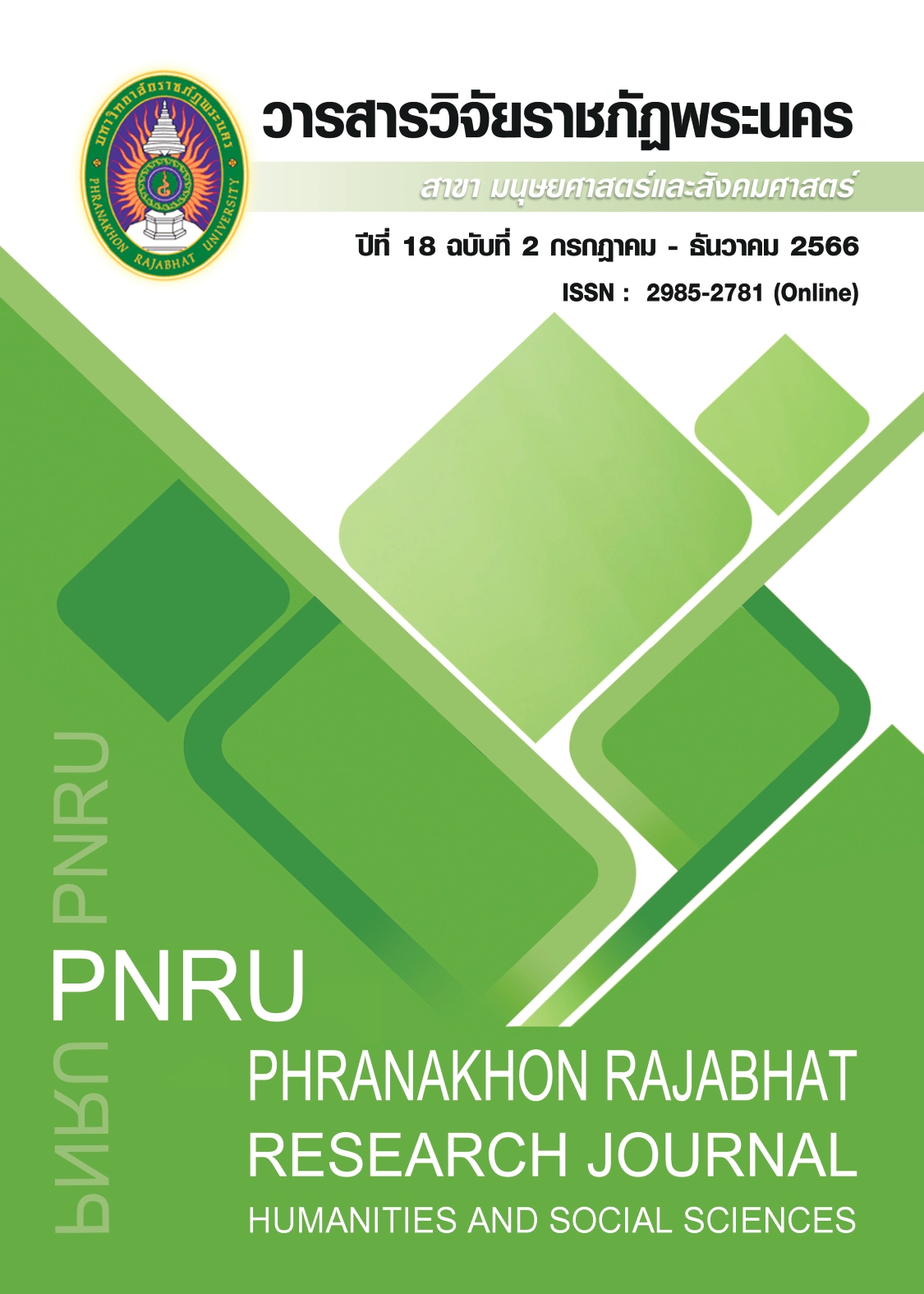ANALYSIS OF AIR CARGO TRANSPORTATION OPERATIONS OF SUVARNABHUMI INTERNATIONAL AIRPORT
Main Article Content
Abstract
This study aimed to study and analyze the correlation of statistical data between the volume of domestic, and international air cargo transportation and collective (not including overnight stays) with the operation years from 2012 – 2022 at Suvarnabhumi International airport by analyzing data on air cargo operations at Suvarnabhumi Airport with simple linear regression analysis where the correlation coefficient (R2) is not less than 0.8, the results were by the correlation of statistical data between domestic air cargo transportation and operation years, international air cargo transportation and operation years and total air cargo transportation (without transit) and operation years of Suvarnabhumi International airport has (R2) 0.826, 0.987 and 0.99 respectively.
Article Details

This work is licensed under a Creative Commons Attribution-NonCommercial-NoDerivatives 4.0 International License.
Each publish articles were copyright by Phranakorn Rajabhat University
Any contents which appeared in each articles in the journal were authors personal opinion. It did not relate to Phranakorn Rajabhat University and other instructors in the university. Each authors would take responsibility on their articles. If there are any mistake, the authors will take responsibility themselves
References
Airports of Thailand Public Company. (2023). Company profile. Retrieved from https://www.airportthai.co.th/ [2023, 12 Apr.]
Airport Capacity and Utility Measurement Development, (2020). Retrieved from https://www.caat.or.th/forum2019/document/1-3.pdf [2022, 22 Jun.]
Airports of Thailand Public Company. (2022). Annual Report of Airports of Thailand Public Company. Retrieved from http:// www.airportthai.co.th/ [2022, 22 Jun.]
Air Travelling Demand from Passenger Points of View, Demand (2020). Retrieved from https://archive.lib.cmu.ac.th/full/T/2557/econ50457str_ch2.pdf [2022, 22 Jun.]
Ayasanond, C. (2019). Service Recovery of Air Transportation, Supply Chain Performance,
and Overall Operation in the Export Business. Kasem Bundit
Journal, 20, 101-116.
Bianco, V., Manca, O., & Nardini, S. (2013). Linear regression models to forecast electricity consumption in Italy. Energy Sources, Part B: Economics, Planning, and Policy, 8(1), 86-93.
Bombelli, A., Santos, B. F. & Tavasszy, L. (2020). Analysis of the air cargo transport
network using a complex network theory perspective. Transportation Research
Part E: Logistics and Transportation Review, 138, 101959.
Buakhom, N. (2022). The Approaches for the development of air cargo areas for the success of the international air cargo. Journal of MCU Buddhapanya Review, 7(4), 223-234.
Chankoson, T. (2016). The factor analysis and development factors of air transport services: service risks in airline business. Panyapiwat Journal, 8(3), 78-88.
Chen, Z. & Jiang, H. (2020). Impacts of high-speed rail on domestic air cargo traffic in China. Transportation Research Part A: Policy And Practice, 142, 1-13.
Chiang Mai Airport. (2021). Retrieved from http://chiangmai.thailandairportshub.com/th/category-view/chiang-mai-airport-information [2022, 19 Jun.]
Dimailig, O. S. & Jeong, J. Y. (2012). Statistical Analysis of Maritime Traffic Volume at
Manila Bay, Philippines. Journal of the Korean Society of Marine
Environment & Safety, 18(4), 323-330.
FAA Forecasting Aviation Activity by Airport (2022). Retrieved from http://www.faa.gov. [2022, 25 May.]
Gkika, S., Fraidaki, K. & Pramatari, K. (2013). Developing innovative services: The case of the airport environment. Part of the IFIP Advances information and Communication Technology book series. IFIPAICT, 399, 250-263.
The International Air Cargo Association. Retrieved from https://www.tiaca.org/ [2023, 15 Jan.]
International Air Transport Association. (2020). Air Cargo Market Analysis. Retrieved from https://www.iata.org/en/iata-repository/publications/economic-reports/air-cargo-
market-analysis---february-2023/ [2023, 12 Apr.]
Jandaboue, W., & Simasathien, P. (2013). Statistical Correlation Analysis of Phuket Airport. EAU Heritage Journal Science and Technology, 7(2), 79-87.
National Statistical Office (2023). Logistics and Transportation Data. Retrieved from http://statbbi.nso.go.th/staticreport/page/sector/th/15.aspx [2023, 22 Mar.]
Paethrangsi, N. (2021). Maximizing revenue in airline industry through air cargo operations. In E3S Web of Conferences (Vol. 244, p. 08019). EDP Sciences.
Sangsomboon, P., Jandaboue, W. & Vijitsanguan, P. (2021). The Relationship between passenger numbers and Aircraft movements of Chiang Mai Airport. Phranakhon
Rajabhat Research Journal: Humanities and Social Sciences, 16(2), 214-232.
Sermpongpan, C., Chungcharoen, E. & Opasanon, S. (2020). Forcasting of Cement Consumption in Thailand. NIDA Business Journal, 26, 81-107. (In Thai)
Sims, R. (2016). A review and application of aviation forecasting for airport planners. Theses and Dissertations. University of North Dakota.
Srikhwan, B. (2020). Sustainable Airport Development Concept for Thailand. Management Science Magazine, 7(2), 239-264.
Solvoll, G., Mathisen, T. A. & Welde, M. (2020). Forecasting air traffic demand for major infrastructure changes. Research in transportation economics, 82, 100873.
Tabsirak, C. (2011). Qualitative Variable and Regression Analysis. Journal of Educational Measurement Mahasarakham University, 17(1), 31-42.
Taesombat, S. (1996). Quantitative forecast Techniques. BKK: Physics Center Printing.
Tangchitwattana, B. (2005). Airline Business. Bangkok: Press and Design Printing.
The Twelfth National Economic and Social Development Plan (2017-2021). (2564). the correlation coefficient e 2020. Retrieved from https://www.nesdc.go.th/ewt_news.php?nid=6420&filename=develop_issue [2022, 14 Dec.]
Wang, G. C., & Jain, C. L. (2003). Regression analysis: modeling & forecasting. Institute of Business Forec.
Yang, Y., Sun, L. & Guo, C. (2018). Aero-material consumption prediction based on linear regression model. Procedia computer science, 131, 825-831.
Young, S. B. (2011). Airport planning and management. (6th ed.). New York: McGraw-Hill.


